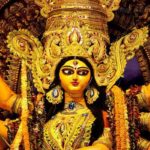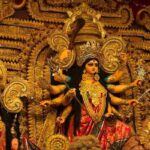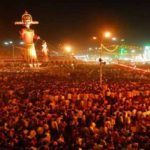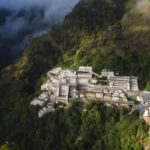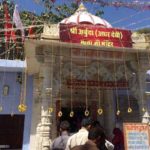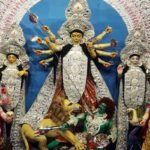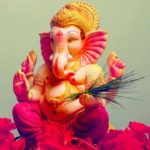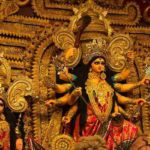Navratri Celebration in india is a big festival celebrated with much pomp and gaiety by the Hindus in India. People worship the nine different forms of the Goddess Durga, which symbolises beauty, strength and divinity, at this festival. ‘Navratri’ is the term for ‘nine nights’. It is the year’s longest Hindu festival, extending over nine nights and ten days. A year from now, Navratri comes four times, one each in a month of Chaitra, Aashadh, Ashwin and Magha. It is very common the Navratri which falls in March or April in Chaitra or Basant months. The Ninth Day is celebrated as Ram Navami in this Navratri. (Shri Ram’s birth).
The other famous Navratri, in September or October, falls under the name of Sharad Navratri. It falls during the lunar month of Ashwin, during Sharad ritu. Since Navratri is even more common and significant That’s why it’s known as the Maha Navratri of all the Navratris. Dussehra or Vijaya Dashmi was celebrated as the triumph of good over evil on the tenth day after Sharad Navratri. In the form of envy, jealousy, rage, lust etc., it encourages people to get rid of the negativity within them. The Navratras open on Dussehra Day.
The nine forms of Goddess Shakti are worshipped during Navratras over the nine separate days. These are Maa Shailputri, Brahmaachaareenee, Chandraghanta, Kushmaanda, Kaatyaayeenee, Kaalraatree, Mahagauri, Sidhidaatree and Skandmaata.
Ghatsthaapna “is performed on the first day of Navratri in which an urn is filled with water and faithfully put to do pooja. An ‘Akhand ‘diya is lit ,Which is burned night and day. After this, fast is maintained and the Goddess is given prayers for nine consecutive days. 9 little girls are called home on the tenth day. They stand for the Goddess. One pays obeisance to them, and breaks the 9 day fast and eats after serving them food.
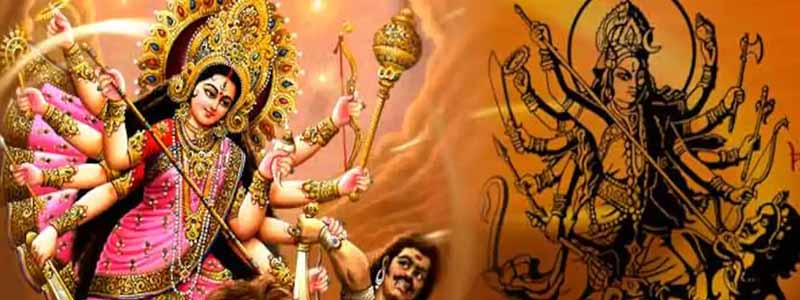
Importance of Navratri
Navratri is a combination of two words: “Nav” + “Ratri” in English, which literally means nine nights. This festival is celebrated with lots of enthusiasm and joy in India. It is a prevalent festival that has been observed in large parts of Gujarat, West Bengal and Delhi. Devotees express their gratitude to Maa Durga, pray for good health , life and mind, and perform Durga puja. Dussehra, also known as Vijayadashmi, which marks the triumph of Lord Ram over King Ravana, is celebrated on the tenth day after the ninth day.
In Hinduism, the Navratri festival holds great significance as it represents the victory of good over evil. These nine days are considered holy and godly, and alcohol, meat, onion and garlic are strictly forbidden. People avoid carrying out any unlawful activity and perform ceremonies, rituals, yagnas and much more.
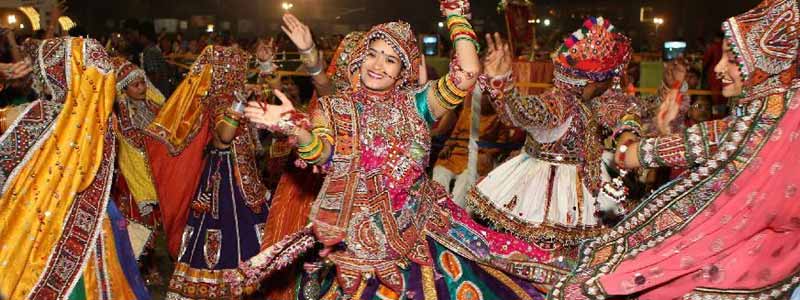
How is Navratri Celebrated?
Navratri is celebrated with zeal and excitement in India. It happens as per Hindu Calendar during the month of Ashvin. Maa Durga‘s idol is worshipped in various ways for nine days straight and is immersed in water on the tenth day. People want a prosperous life, a safe mind and body, and they pray for spiritual, mental and physical wellbeing. The puja rituals are observed straight for nine days, Meaning the significance of one avatar or Goddess Durga incarnation on each day. The significance of each day is defined here, and associated with the goddess:
Have a look at the Nine Days of Sharad Navratri and Rituals to be conducted:
Day 1 – Maa Shailputri Puja – The first form of Maa Durga, Maa Shailputri represents the planet Moon. Worshipping her can help to eliminate any bad effects or omens.
Day 2 – Maa Brahmacharini Puja – As per astrology, Maa Brahmacharini controls the planet Mars and diminishes any bad effects if worshipped with a pure heart.
Day 3 – Maa Chandraghanta Puja – Maa Chandraghata dominates the planet Venus and offers courage and fearlessness.
Day 4 – Maa Kushmanda Puja – Maa Kushmanda represents the planet Sun and eliminates any ill-effects in the nearby future.
Day 5 – Maa Skandamata Puja – Maa Skand Mata represents the planet Mercury and is very compassionate towards her devotee.
Day 6 – Maa Katyayani Puja – Jupiter planet is controlled by Maa Katyayani. She provides courage and prowess to her worshippers.
Day 7 – Maa Kaalratri Puja – Maa Kaalratri controls the Saturn planet and symbolises valour.
Day 8 – Maa Mahagauri Puja – Maa Mahagauri is the divine controller of planet Rahu and pacify harmful effects.
Day 9 – Maa Siddhidatri Puja – Maa Siddhidatri dominates the planet Ketu and offers wisdom and knowledge.
Puja Ingredients for Navratri Puja
● A picture or idol of Goddess Durga in the temple altar
● Chunri or a red colored dyed cloth
● Fresh mango leaves
● Rice
● Durga Saptashati book
● A red thread called Moli
● Gangajal
● Sandalwood
● Coconut
● Red sacred powder or Moli
● Barley seeds
● A clay pot to sow barley seeds
● Gulal
● Supari or Areca nut
● Pan or Betel Leaves
● Cloves or Laung
● Cardamom or Elaichi
Navratri Puja Vidhi
● Wake up early in the morning, take a bath and wear clean clothes.
● Get all the ingredients mentioned above.
● Arrange a thali for puja with all ingredients in it.
● Place the idol or picture of Goddess Durga on a red-colored cloth.
● Place the claypot, sow the barley seeds and sprinkle some water everyday till Navami.
● In an auspicious muhurat, carry out the process of urn installation or Ghatasthapana. Fill the urn with Gangajal, and place mango leaves on the top of its mouth. Wrap the neck of the urn with sacred red thread or Moli, and coconut with red chunri. Place the coconut on the top of mango leaves. Place the urn near or on the claypot.
● Carry out panchopchar puja of the deities, which includes worshipping with flowers, camphor, incense sticks, scent and cooked dishes.
● Chant Maa Durga Mantras throughout these nine days and ask for prosperity. Invite her into your house and ask her to grace your house with her presence.
● On the eighth and ninth day, carry out the same puja and invite nine girls at your house. These nine girls represents nine forms of Goddess Durga. Hence, wash their feet, offer them a clean and comfortable seat. Worship them, apply tilak on their forehead and serve them delicious food.
● On the last day after Durga puja, carry out Ghat Visarjan. Say your prayers, offer flowers and rice to the deities and remove the Ghata from the altar.
Hope you like this article and gain major insight about the festival of Navratri. wishes you a prosperous Navratri and Vijayadashami.

